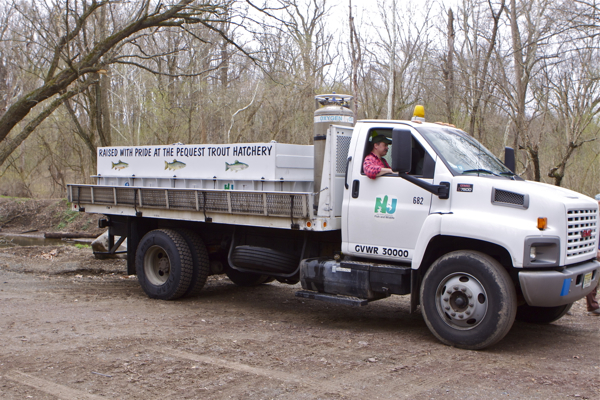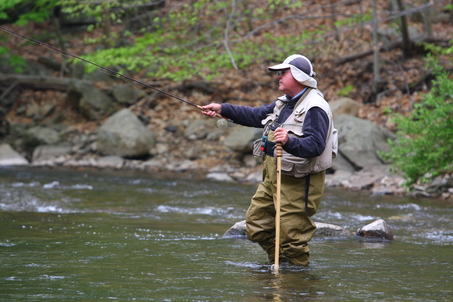Toxic Alternatives To Chemical PFAS Illustrates Failure Of TSCA “Reforms”
NJ’s US Senator Booker declared victory
Now that he’s running for President, will he be held accountable for failure?
Bill Wolfe, director of the New Jersey office of Public Employees for Environmental Responsibility, said not having Lautenberg in the Senate is a “huge loss.” He would “step on toes to get things done,” whereas Wolfe said Booker is “the antitheses of that.” He called the former mayor a “calibrated corporate Democrat who worries about alienating Wall Street and corporate America.” ~~~ E&E News (10/31/13)
[Update below]
Scientists at the NJ Department of Environmental Protection are criticizing the US EPA for failure to consider the toxicity of alternatives to the controversial group of toxic chemicals know as PFAS.
NJ Spotlight reported:
New Jersey scientists are accusing the federal government of failing to consider many health risks posed by a group of chemicals that are designed to substitute for some of the controversial PFAS substances which are now being strictly regulated by the state. Regulation of PFAS has been deemed necessary because of growing evidence that they are a danger to public health.
[Update: For context, according to US EPA:
Another tool in the TSCA enforcement toolkit is TSCA Section 7 Imminent and Substantial Engagement (ISE) authority. This infrequently used provision provides EPA authority for preventing a release or continued release of a substance meeting the definition of a ”imminently hazardous chemical substance or mixture” in TSCA7(f).
That DEP criticism directly contradicts claims by NJ US Senator Cory Booker, who declared victory on this set of issues:
“Congressional approval of this bipartisan chemical safety law is a major victory for our state and for the legacy of Sen. Frank Lautenberg who championed this fight. I am proud of the long-overdue improvements I fought to include in this bill, including provisions that strengthen EPA’s ability to regulate toxic chemicals, provide EPA with dedicated funding, give more scrutiny to new chemicals before they come on the market, allow states to continue to co-enforce with EPA, and minimize animal testing when scientifically reliable alternatives exist.
As we recently wrote (scroll down to second point)
II) GO ASK BOOKER
Second, while exposing the failure to screen the toxicity of substitute chemicals, NJ Spotlight failed to note the key reason for that failure:
New Jersey’s nation-leading efforts to protect the public from a class of toxic chemicals in drinking water are being threatened by the emergence of substitutes that may be just as hazardous to human health, experts argue.
That failure is due to a federal law known as the Toxic Substances Control Act (TSCA).
The Toxic Substances Control Act (TSCA) is a law, passed by Congress in 1976 and administered by the United States Environmental Protection Agency, that regulates the introduction of new or already existing chemicals.
TSCA was just overhauled in 2016 by legislation negotiated by NJ Senator Cory Booker–
Here’s Booker’s self congratulatory press release:
“Congressional approval of this bipartisan chemical safety law is a major victory for our state and for the legacy of Sen. Frank Lautenberg who championed this fight. I am proud of the long-overdue improvements I fought to include in this bill, including provisions that strengthen EPA’s ability to regulate toxic chemicals,provide EPA with dedicated funding, give more scrutiny to new chemicals before they come on the market, allow states to continue to co-enforce with EPA, and minimize animal testing when scientifically reliable alternatives exist. Despite long odds and difficult challenges, common sense and finding common ground won the day. I want to thank all of my colleagues on both sides of the aisle that came together to make this bill possible. I look forward to celebrating when President Obama signs this important chemical safety reform legislation into law, helping to keep American families and children safe from toxic chemicals.”
In May, Sen. Booker spoke on the Senate floor urging swift passage of the bipartisan, bicameral agreement on the Frank R. Lautenberg Chemical Safety for the 21st Century Act, which makes badly needed reforms to the Toxic Substances Control Act of 1976. His remarks can be viewed here.
To read the act, see:
Someone needs to go ask Booker about all that.
Is EPA stronger and subject to stricter legal standards? Is so, how could they do what DEP claims?
Is NJ DEP authorized to enforce those stricter standards? If so, why are they blasting EPA?
Are children safe from toxic chemicals, as Booker claimed?
And we predicted this Booker sell out:
Bill Wolfe, director of the New Jersey office of Public Employees for Environmental Responsibility, said not having Lautenberg in the Senate is a “huge loss.” He would “step on toes to get things done,” whereas Wolfe said Booker is “the antitheses of that.” He called the former mayor a “calibrated corporate Democrat who worries about alienating Wall Street and corporate America.”






